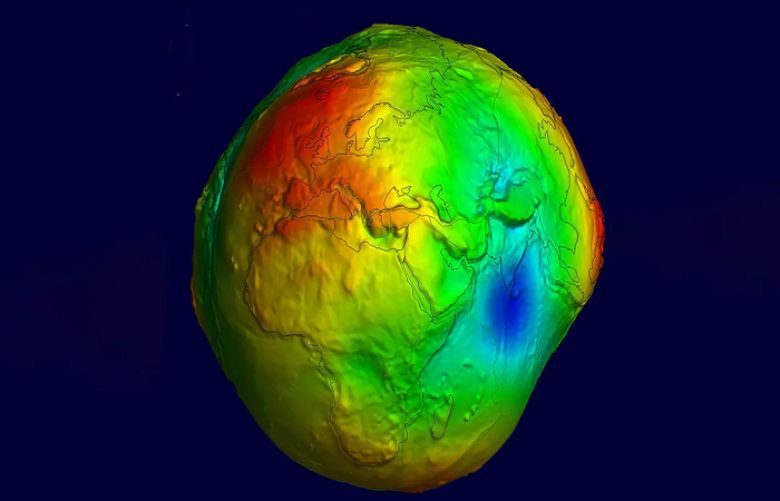Recently, scientists discovered a “gravity hole” in the Indian Ocean, a spot where Earth’s gravitational pull is weaker, its mass is lower than normal, and the sea level dips by over 328 feet (100 metres).
Geologists were baffled by the anomaly's origin, which remained unknown, for a very long time till researchers from Bengaluru, India's Indian Institute of Science discovered what they think is a convincing explanation for its formation.
They postulate that the gravity hole was caused by magma plumes emerging from the planet's interior, similar to those that result in the creation of volcanoes.
The scientists employed supercomputers to recreate the formation of the region up to 140 million years ago in order to come to this conclusion.
The results, described in a study that was recently released in the journal Geophysical Research Letters, centre on an extinct ancient ocean.
Humans are bound to believe that Earth is a perfect sphere which is not entirely true.
“The Earth is basically a lumpy potato,” said study coauthor Attreyee Ghosh, a geophysicist and associate professor at the Centre for Earth Sciences of the Indian Institute of Science. “So technically it’s not a sphere, but what we call an ellipsoid, because as the planet rotates the middle part bulges outward.”
Our planet is not homogeneous in its density and its properties, with some areas being more dense than others — that affects Earth’s surface and its gravity, Ghosh added.
“If you pour water on the surface of the Earth, the level that the water takes is called a geoid — and that is controlled by these density differences in the material inside the planet, because they attract the surface in very different ways depending on how much mass there is underneath,” she said.
The Indian Ocean geoid low, also known as the "gravity hole," is the lowest point and largest gravitational anomaly in the ocean. It forms a circular depression off India's southern tip and covers 1.2 million square miles. Despite being discovered in 1948, the anomaly remains a mystery.
“It is by far the biggest low in the geoid, and it hasn’t been explained properly,” Ghosh said.
Ghosh and her colleagues utilised computer models to turn the clock back 140 million years to examine the larger picture, geologically speaking, in order to uncover a potential solution.
“We have some information and some confidence about what the Earth looked like back then,” she said. “The continents and the oceans were in very different places, and the density structure was also very different.”
The team conducted 19 simulations to simulate the shifting of tectonic plates and magma behaviour inside Earth's mantle. Six of the scenarios resulted in a geoid low, similar to the one in the Indian Ocean, according to an international news channel.
The "gravity hole" is thought to have formed as a result of the existence of magma plumes and mantle structures near the geoid low. Different magma density parameters were used in the simulations, and lows did not emerge in those with no plumes.
Tens of millions of years ago, as India's landmass moved towards Asia and eventually collided with it, the ancient ocean vanished, giving rise to the plumes themselves, according to Ghosh.
“India was in a very different place 140 million years ago, and there was an ocean between the Indian plate and Asia. India started moving north and as it did, the ocean disappeared and the gap with Asia closed,” she explained.
As the oceanic plate went down inside the mantle, it could have spurred the formation of the plumes, bringing low-density material closer to Earth’s surface







